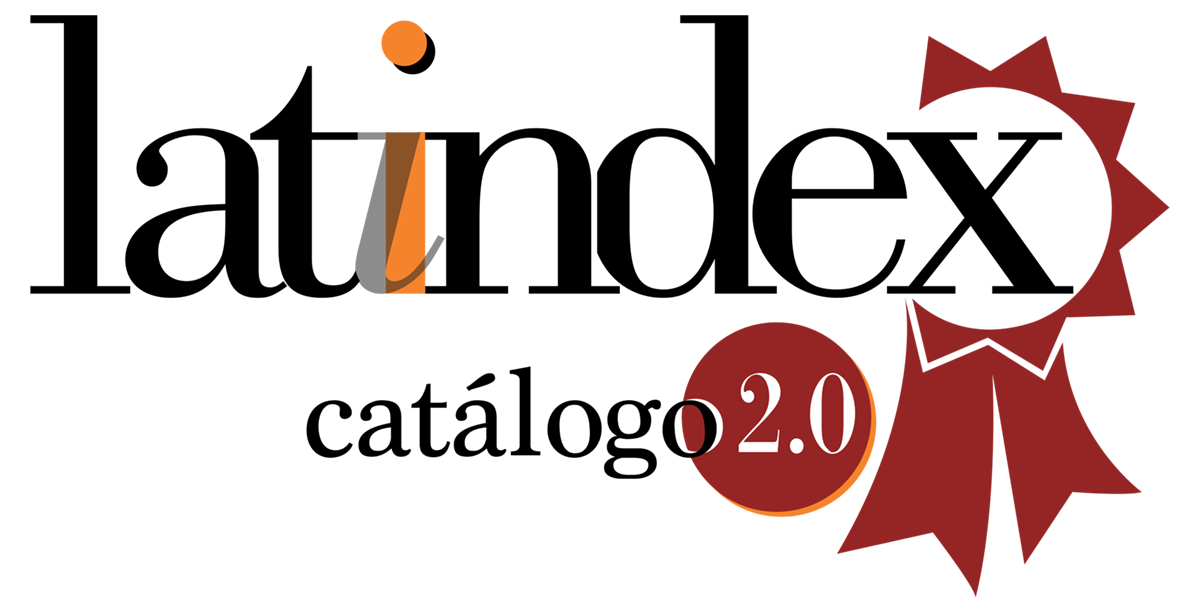Food habits and nutritional status in children and teenagers with autism spectrum disorders attending the hope association
DOI:
https://doi.org/10.47133/IEUNA2112Keywords:
autism spectrum disorder, eating habits, nutricional statusAbstract
Autism spectrum disorders (ASD) are a group of neurological development syndromes, which manifest in early childhood. Due to the selectivity that these patients present with respect to food, it is crucial to ensure their nutritional status and the quality of their diet. The objective was to evaluate the eating habits and nutritional status of children and adolescents with ASD who attend the Esperanza para Autismo Foundation. The study is type observational, descriptive cross-sectional study carried out in December 2019 on 30 children and adolescents with ASD from 2 to 15 years old. Sociodemographic variables, nutritional status and eating habits were studied. Eighty percent of the population was male. The average age was 4.7 years where 83.3 % had schooling. The predominant nutritional status was obesity in 30 %. In relation to eating habits, the consumption of different foods was daily for dairy, moderate in terms of meat and egg consumption, fruits and vegetables and moderate for the consumption of cereals and sugars. The eating habits of the population were adequate in terms of weekly frequency. The predominant nutritional status was obesity.
Downloads
References
Adams, J., Audhya, T., Geis, E., Gehn, E., Fimbres, V., Pollard, E., Mitchell, J., Ingram, J., Hellmers, R., Laake, D., Matthews, J., Li, K., Naviaux, J., Naviaux, R., Adams, R., Coleman, D. & Quig, D. (2018). Comprehensive Nutritional and Dietary Intervention for Autism Spectrum Disorder-A Randomized, Controlled 12-Month Trial.Nutrients,10(3), 369. https://www.ncbi.nlm.nih.gov/pmc/articles/PMC5872787/pdf/nutrients-10-00369.pdf
American Psychiatric Association (2013). Diagnostic and statistical manual of mental disorders. (5th ed.). Arlington, VA. American Psychiatric Publishing.
Baio, J. (2012) Prevalence of autism spectrum disorders: autism and developmental disabilities monitoring network, 14 sites, United States, 2008. Morbidity and Mortality Weekly Report (MMWR). Surveillance Summaries, 61(3), 1–19.3. https://www.cdc.gov/mmwr/preview/mmwrhtml/ss6103a1.htm
Buehler, M. R. (2011). A proposed mechanism for autism: an aberrant neuroimmune response manifested as a psychiatric disorder. Medical Hypotheses, 76(6), 863–70. https://www.sciencedirect.com/science/article/abs/pii/S0306987711000892?via%3Dihub
Cekici, H. & Sanlier, N. (2019). Current nutritional approaches in managing autism spectrum disorder: A review. Nutritional Neuroscience, 22(3),145-155. https://www.tandfonline.com/doi/full/10.1080/1028415X.2017.1358481
Chistol, L., Bandini, L., Must, A., Phillips, S., Cermak, S. & Curtin, C. (2018). Sensory Sensitivity and Food Selectivity in Children With Autism Spectrum Disorder. Journal of Autism and Developmental Disorders,48(2), 583-591. https://www.ncbi.nlm.nih.gov/pmc/articles/PMC6215327/pdf/nihms-993381.pdf
Curtin, C., Anderson, S. E., Must, A. & Bandini, L. G. (2010). The prevalence of obesity in children with autism: a secondary data analysis using nationally representative data from the national survey of children’s health. BMC Pediatrics,10, 11. https://bmcpediatr.biomedcentral.com/articles/10.1186/1471-2431-10-11
Esperanza para el autismo. (2020) Asociación de Padres y amigos de personas diagnosticadas con Trastorno del Espectro del Autismo (TEA). http://www.autismo.com.py/index.html
Hallmayer, J., Cleveland, S., Torres, A., Phillips, J., Cohen, B., Torigoe, T., Miller, J., Fedele, A., Collins, J., Smith, K., Lostpeich, L., Croen, L., Ozonoff, S., Lajonchere, C., Grether, J. & Rissch, N.(2011). Genetic heritability and shared environmental factors among twin pairs with autism. Archives of General Psychiatry, 68(11), 1095–102. https://www.ncbi.nlm.nih.gov/pmc/articles/PMC4440679/pdf/nihms685663.pdf
Herbert, M. R. (2010). Contributions of the environment and environmentally vulnerable physiology to autism spectrum disorders. Current Opinion in Neurology, 23(2), 103–10. https://journals.lww.com/co-neurology/Abstract/2010/04000/Contributions_of_the_environment_and.4.aspx
Hyman, S. L., Stewart, P., Schmidt, B., Cain, U., Lemcke, N., Foley, J. T., Peck, R., Clemons, T., Reynolds, A., Johnson, C., Handen, B., James, J., Courtney, P. M., Molloy, M. & Philip, K. (2012). Nutrient intake from food in children with autism. Pediatrics,130,S145-53.https://www.ncbi.nlm.nih.gov/pmc/articles/PMC4536585/pdf/peds.2012-0900L.pdf
Kana, R. K ., Uddin, L. Q. , Kenet, T., Chugani, D. & Müller, R-A. (2014). Brain connectivity in autism. Frontiers in Human Neuroscience,8,349.https://www.frontiersin.org/articles/10.3389/fnhum.2014.00349/full
Kawicka, A. & Regulska-Ilow, B. (2013).How Nutritional Status, Diet and Dietary Supplements Can Affect Autism. A Review. Rocz Panstw Zakl Hig,64(1),1-12. https://pubmed.ncbi.nlm.nih.gov/23789306/?from_term=Autism+Spectrum+Disorder+and+nutritional+status&from_pos=4
Lai, M. C., Lombardo, M. V. & Baron-Cohen, S. (2014). Autism. Lancet,383(9920), 896–910. https://www.thelancet.com/journals/lancet/article/PIIS0140-6736(13)61539-1/fulltext
Lenroot, R. K. & Yeung, P. K. (2013). Heterogeneity within autism spectrum isorders: what have we learned from neuroimaging studies? Frontiers in Hum Neuroscience,7, 733. https://www.ncbi.nlm.nih.gov/pmc/articles/PMC3812662/pdf/fnhum-07-00733.pdf
Marí-Bauset, S., Zazpe, I., Mari-Sanchis, A., Llopis-González, A. & Morales-Suárez-Varela, M. (2013). Food selectivity in autism spectrum disorders: a systematic review. Journal of Child Neurol,29,1554–61. https://journals.sagepub.com/doi/full/10.1177/0883073813498821?url_ver=Z39.88-2003&rfr_id=ori:rid:crossref.org&rfr_dat=cr_pub%20%200pubmed
Masi, A., DeMayo, M., Glozier, N. & Guatella, A. (2017). An Overview of Autism Spectrum Disorder, Heterogeneity and Treatment Options. Neuroscience Bulletin, 33(2), 183–193. https://www.ncbi.nlm.nih.gov/pmc/articles/PMC5360849/pdf/12264_2017_Article_100.pdf
Morgese, M. G. & Trabace, L. (2016). Maternal malnutrtion in the etiopathogenesis of psychiatric disease: role of polyunsaturated fatty acids. International Journal of Brain Science, 6(3), pii E24. https://www.ncbi.nlm.nih.gov/pmc/articles/PMC5039453/pdf/brainsci-06-00024.pdf
Navarro, F., Pearson, D., Fatheree, N., Mansour, R., Hashmi, S. & Rhoads J. (2015). Are 'Leaky Gut' and Behavior Associated With Gluten and Dairy Containing Diet in Children With Autism Spectrum Disorders? Nutritional Neuroscience, 18(4), 177-85. https://www.tandfonline.com/doi/full/10.1179/1476830514Y.0000000110
Randell, E., McNamara, R., Delport, S., Busse, M., Hastings, R., Gillespie, D., Williams-Thomas, R., Brookes-Howell, L., Romeo, R., Boadu, J., Ahuja, A., McKigney, A. M., Knapp, M., Smith, K., Thornton, J. & Warren, G. (2019). Sensory integration therapy versus usual care for sensory processing difficulties in autism spectrum disorder in children: study protocol for a pragmatic randomized controlled trial. Trials,20, 113. https://www.ncbi.nlm.nih.gov/pmc/articles/PMC6371421/pdf/13063_2019_Article_3205.pdf
Ranjan, S. & Nasser, J. A. (2015). Nutritional status of individuals with autism spectrum disorders: do we know enough? Advanced in Nutrition, 6(4),397–407. https://www.ncbi.nlm.nih.gov/pmc/articles/PMC4496734/pdf/an007914.pdf
Sharp, W. G., Jaquess, D. L. & Lukens, C. T. (2013). Multi-method assessment of feeding problems among children with autism spectrum disorders. Research in Autism Spectrum Disorders, 7(1), 56–65.
Stewart, P. A., Hyman, S. L., Schmidt, B. L., Macklin, E. A., Reynolds, A., Johnson, C. R., James, S. J. & Manning-Courtney, P. (2015). Dietary supplementation in children with autism spectrum disorders: common, insufficient, and excessive. Journal of the Academy Nutrition and Dietetics, 115(8),1237–48. https://jandonline.org/article/S2212-2672(15)00390-1/fulltext
Stubbs, G., Henley, K. & Green, J. (2016). Autism: will vitamin D supplementation during pregnancy and early childhood reduce the recurrence rate of autism in newborn siblings? Medical Hypotheses,88, 74–78. https://www.sciencedirect.com/science/article/pii/S0306987716000347
Wallace, G., Llewellyn, C., Fildes, A. & Ronald, A. (2018). Autism spectrum disorder and food neophobia: clinical and subclinical links. The American Journal of Clinical Nutrition, 108, 701–707. https://academic.oup.com/ajcn/article/108/4/701/5129176


















